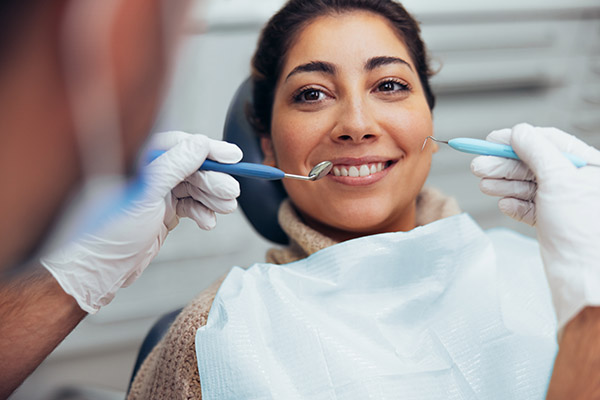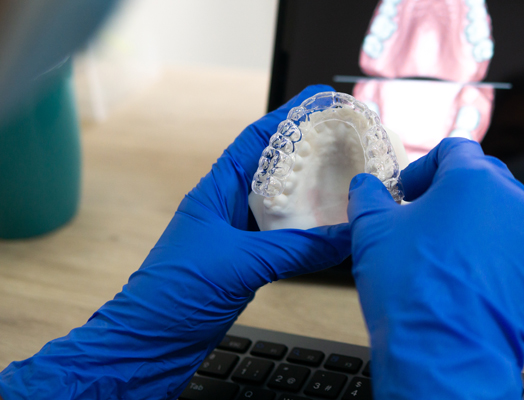 A good restorative dentist can treat dental chipping right away. This type of dental injury can result from biting hard foods. It can also be due to falls, accidents, fights, and sports injuries. Here are the details on how your restorative dentist can rebuild your chipped teeth.
A good restorative dentist can treat dental chipping right away. This type of dental injury can result from biting hard foods. It can also be due to falls, accidents, fights, and sports injuries. Here are the details on how your restorative dentist can rebuild your chipped teeth.
Dental bonding
This is a quick way to restore a chipped tooth. The restorative dentist can perform this in one visit. Cleaning the area will come first. Roughening it with a solution or gel will help the bonding material stick better to the tooth.
Applying the material will follow. The dentist will use a curing light to harden the bonding material. Shaping and polishing the tooth will allow the material to blend well with the natural dental structure. Avoid hard foods because this restoration can still break.
Dental crowns
A cap or crown can cover a tooth with a large chip on top. It can cover the damaged area well. The restorative dentist will clean the tooth and shave off a significant amount of dental structure. This will allow the custom-fit crown to fit over the affected tooth.
In some cases, a chip can go deep into the pulp cavity. This will result in terrible pain. For this, the restorative dentist will perform a root canal treatment. Numbing the area will make the treatment painless. Some patients need dental sedation to relax them during the procedure. The dentist will create an opening through the top part of the tooth once the anesthetic takes effect.
Cleaning out the infected or damaged pulp will remove the blood vessels and nerves. This will stop the pain. The restorative dentist will disinfect and dry the area. Studies reveal that once a tooth loses its pulp, it weakens. Filling it with gutta-percha will stabilize the weakened tooth.
The dentist will take impressions of the treated tooth. The lab will use the impressions to create a custom crown. This restoration will protect the tooth from future damage. It will also strengthen the tooth’s bite and improve the patient’s smile.
Porcelain veneers
A restorative dentist can also use thin shells to repair chipped teeth. Porcelain veneers are stain-resistant and durable. Research shows that porcelain veneers are popular with celebrities. That is why this type of restoration has a strong following. Numbing the area might be necessary for some patients. Cleaning the tooth and treating any cavities will follow.
The dentist will match the shell to the color of the patient’s natural teeth. Shaving off a thin layer of enamel is necessary so that the shell has enough space. Roughening the front surface of the tooth will make the shell stick better to the tooth. The restorative dentist will cement the shell to the front side of the tooth.
A curing light will harden the adhesive and fix the shell in place. Shaping and polishing the shell will allow it to blend well with the natural dental structure. The shell may take weeks to create in the lab. But once they are ready, installing them will come next. This will take one visit.
Your restorative dentist can help reconstruct your smile in no time
Dental chipping can happen at any time. It can be large or small, as well as shallow or deep. You can get the right treatment for the dental chipping you have. Working with your restorative dentist can make the repair visit smooth and stress-free.
Request an appointment or call Scripps Ranch Dental at 858-222-6164 for an appointment in our San Diego office.
Related Posts
Restorative dentists do not only repair damaged teeth. They also enhance overall oral health. From addressing cavities to replacing missing teeth, these dental professionals provide a variety of treatments that restore the function of damaged teeth and protect your oral health.Restorative dentistry is the dental specialty that restores damaged and decayed teeth. These professionals also…
For many people, the decision to get dentures is a significant step toward reclaiming their oral health and well-being. Getting dentures from a restorative dentist can help restore confidence, function, and the joy of showing off your smile. If you are considering dentures, understanding the process ahead of time can alleviate any concerns and prepare…
A dental crown can help restore the appearance and function of your smile while improving your oral health. Working with a restorative dentist can streamline the process. Here are a few benefits of getting a dental crown from a restorative dentist.Healthy teeth feature an outer shell known as enamel, which protects the underlying dentin. Though…


